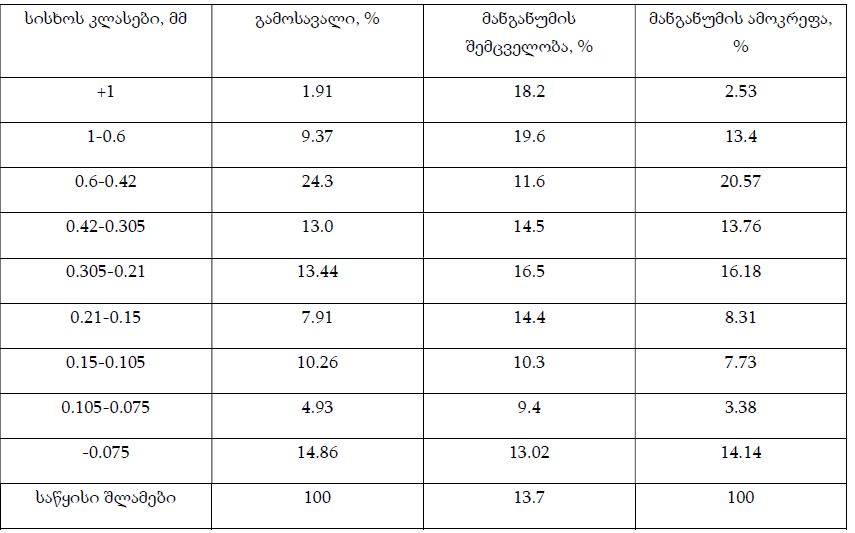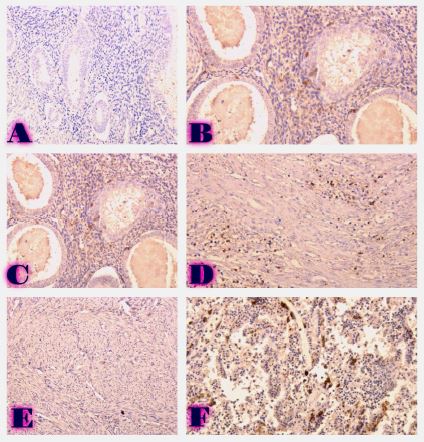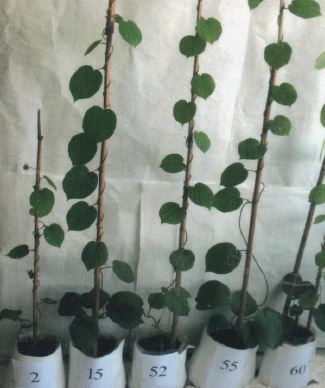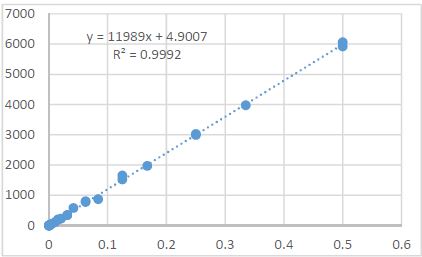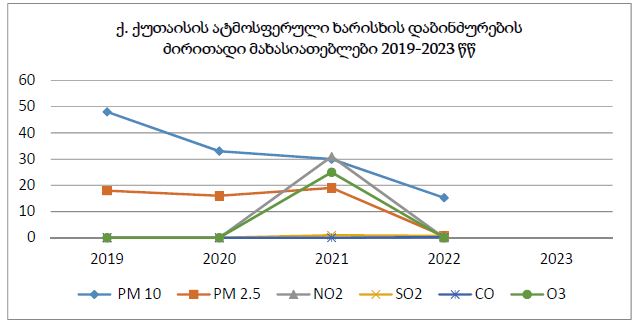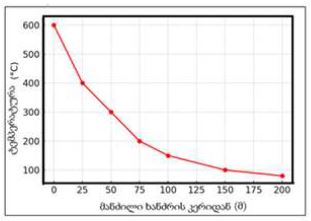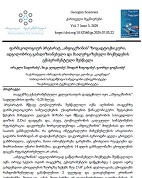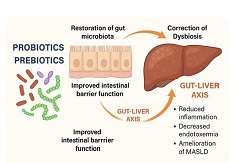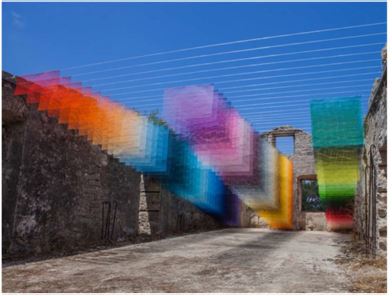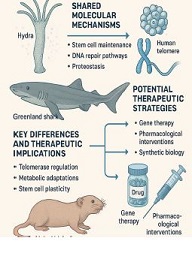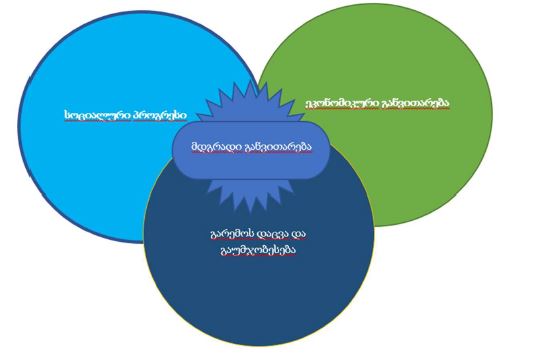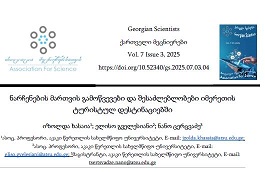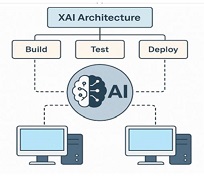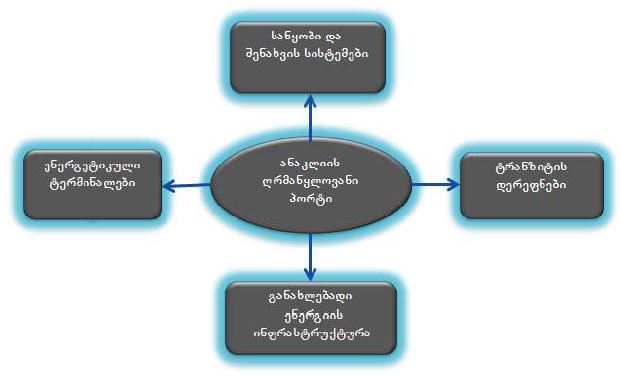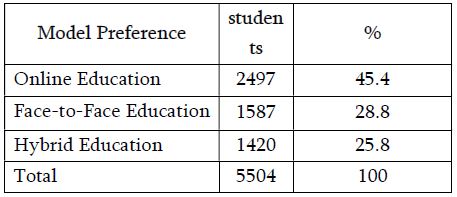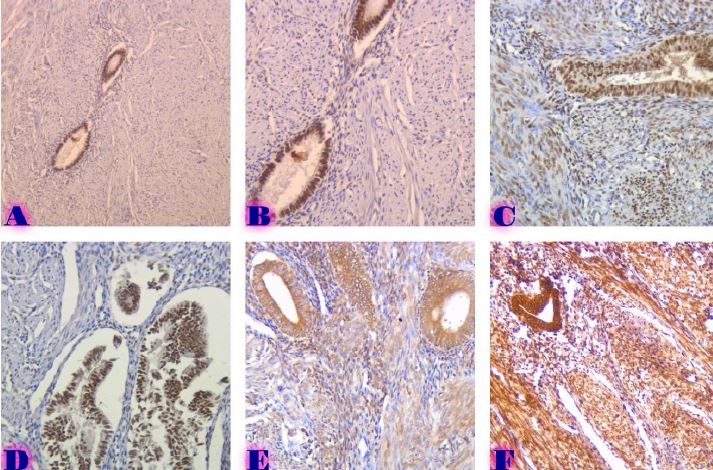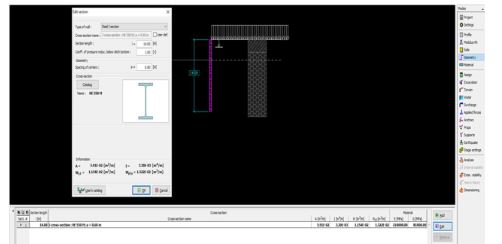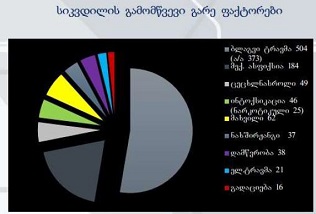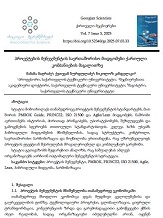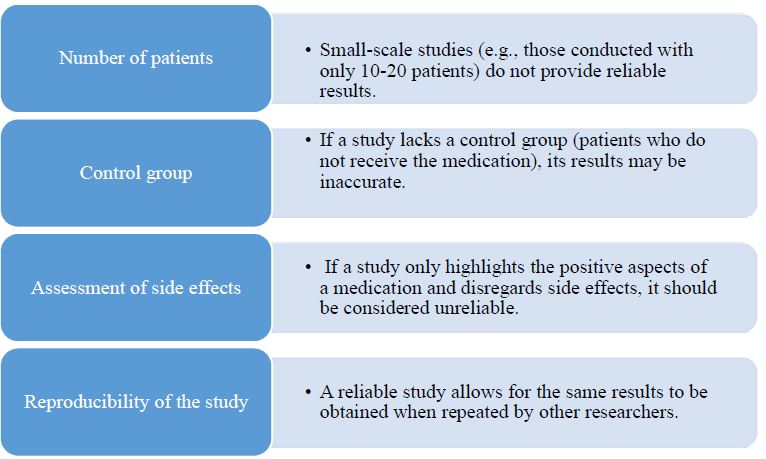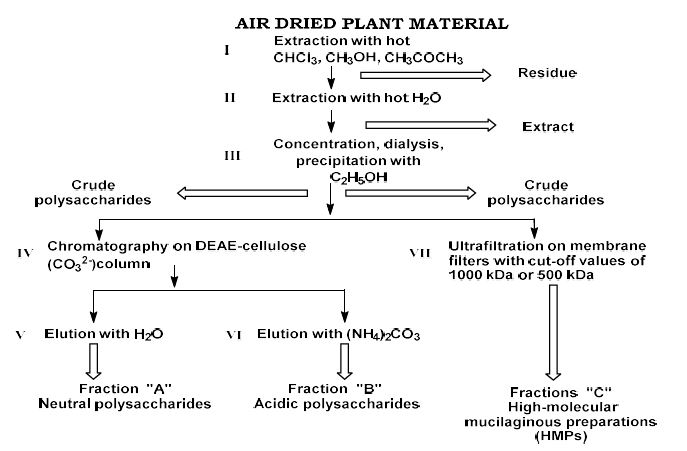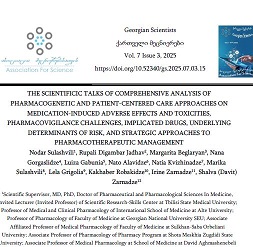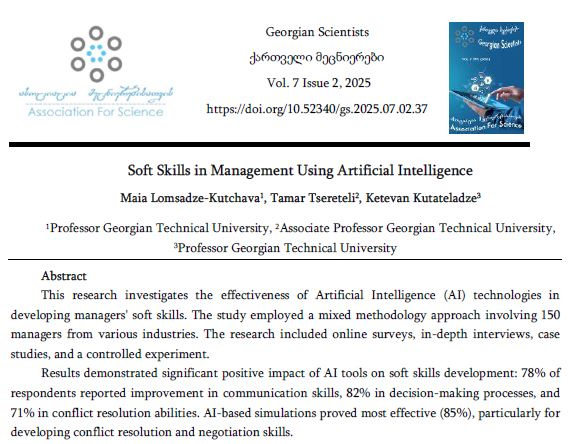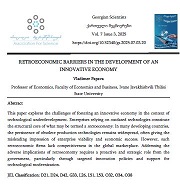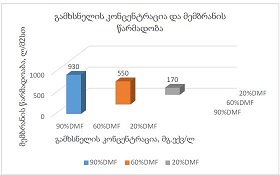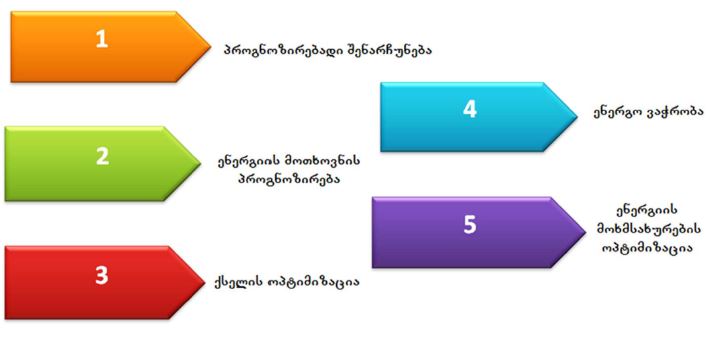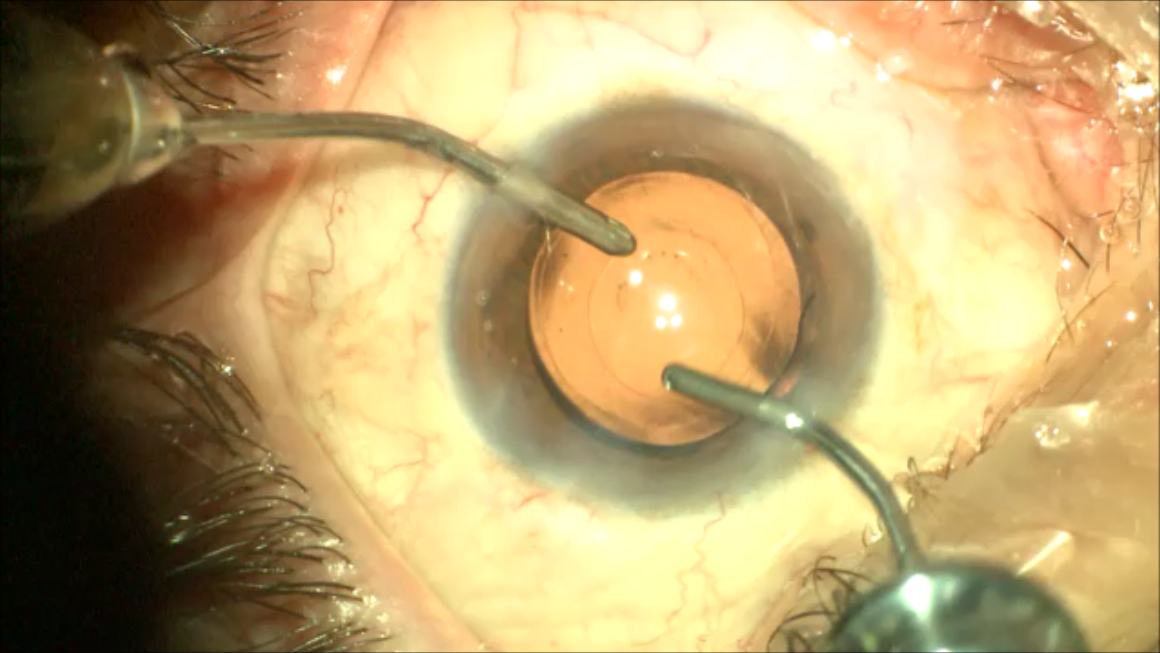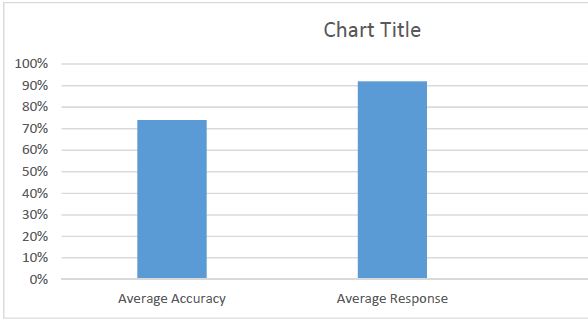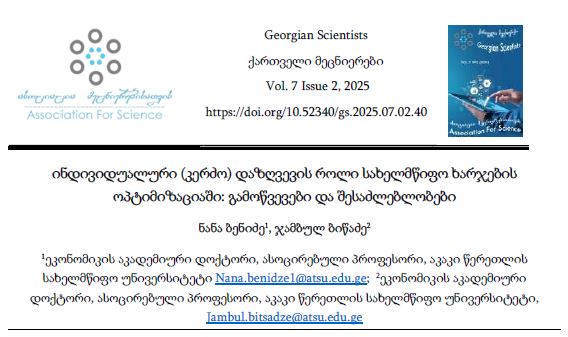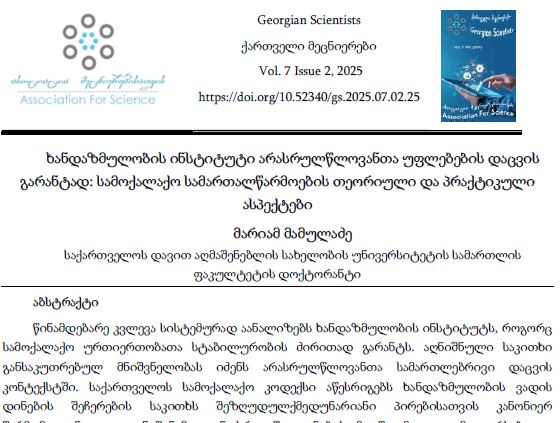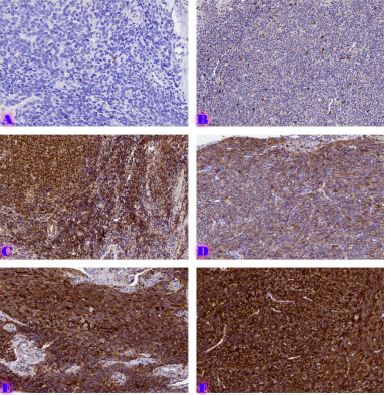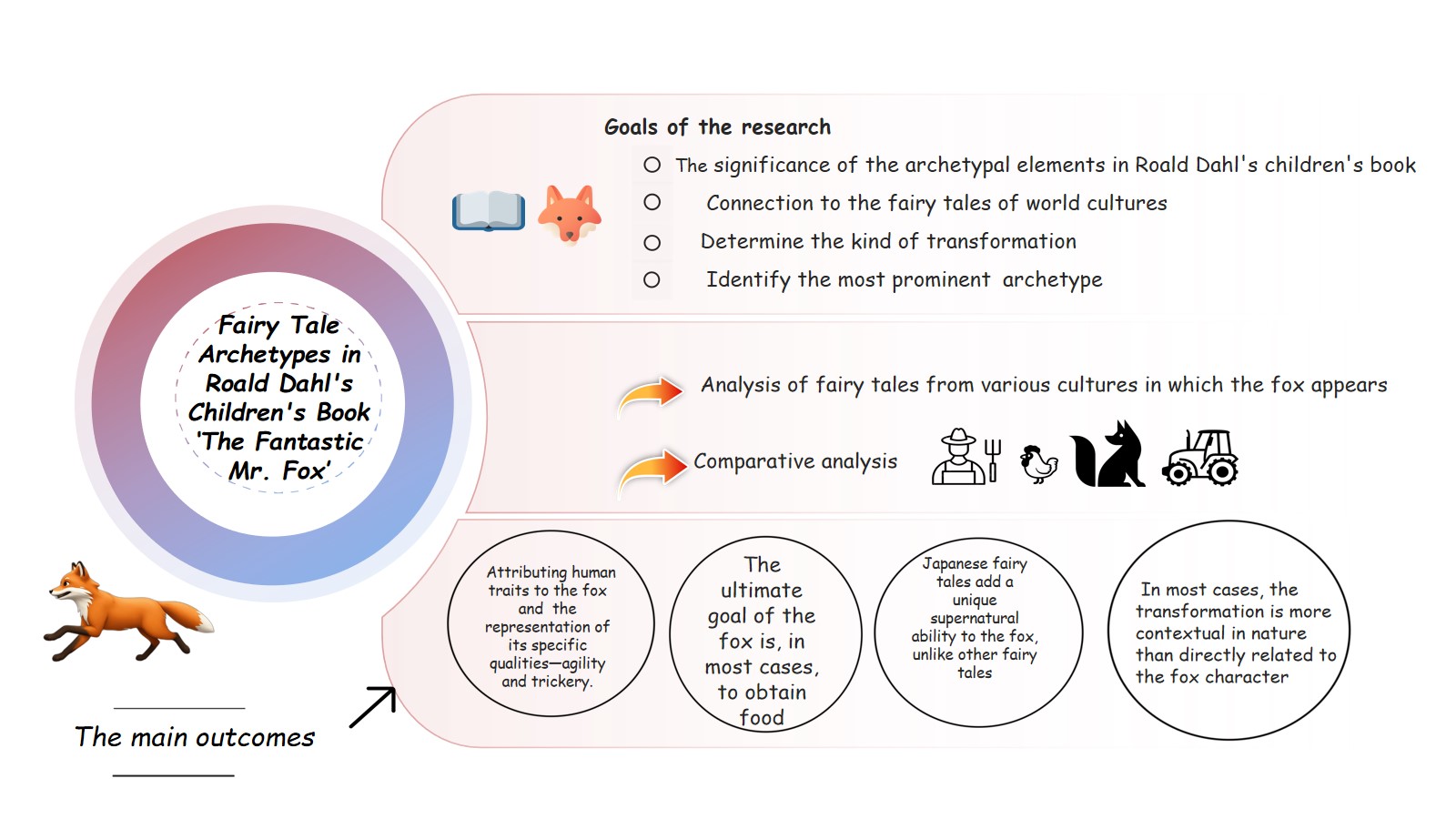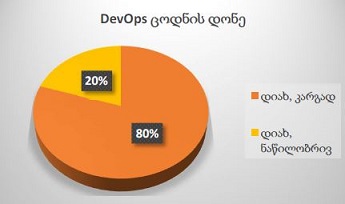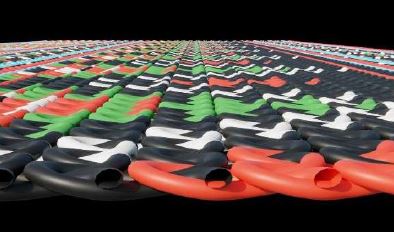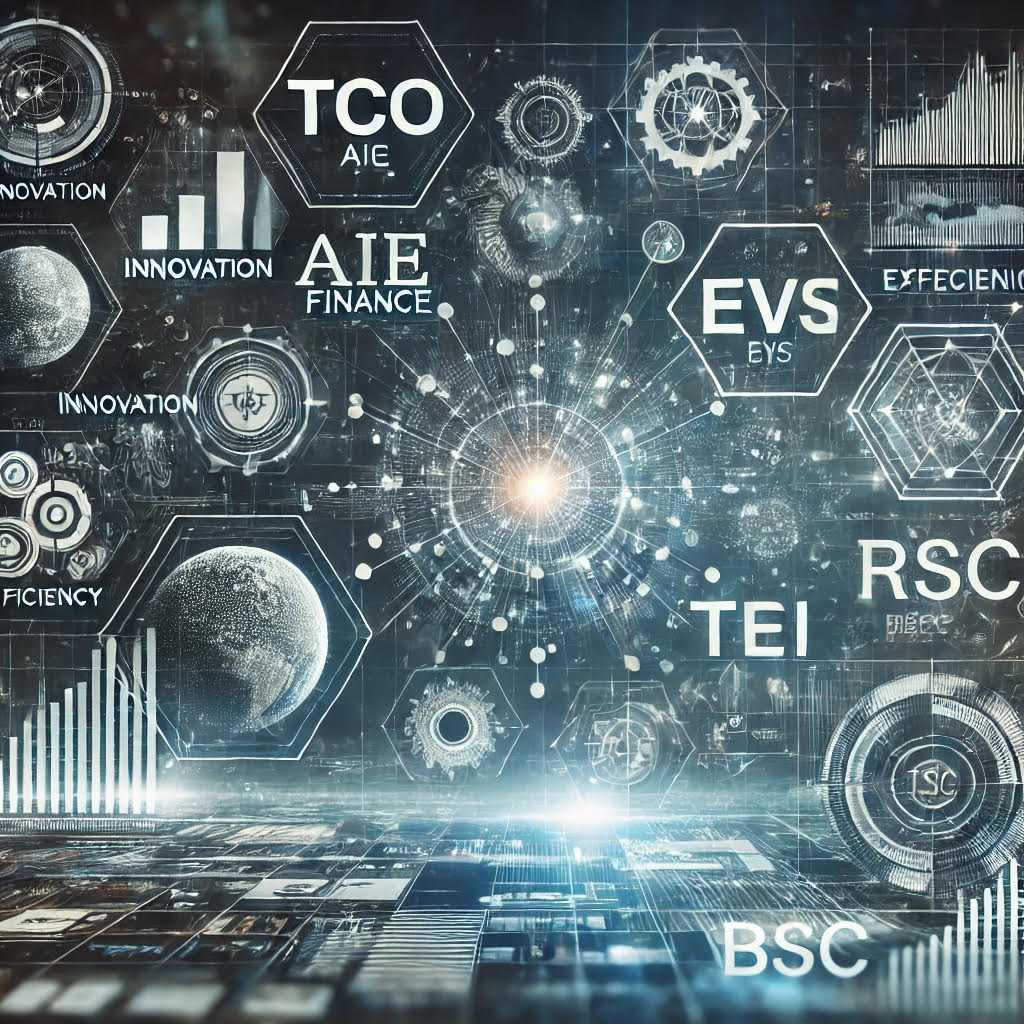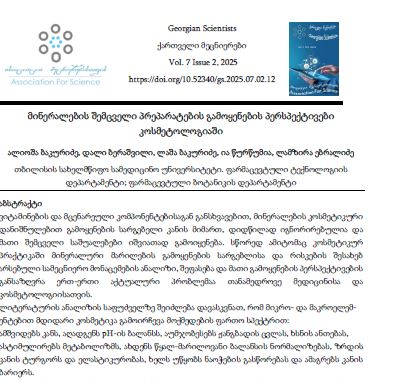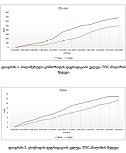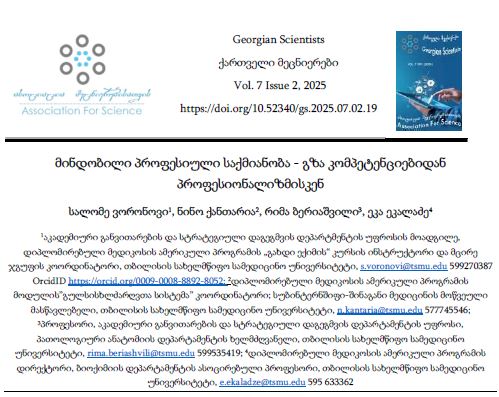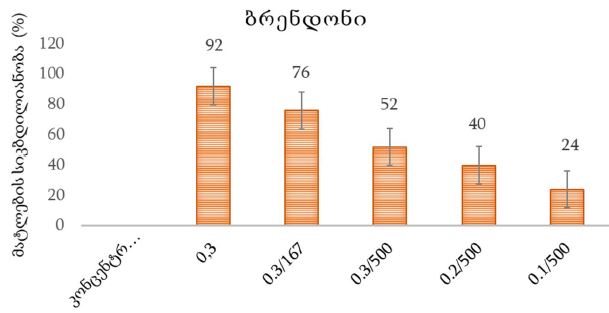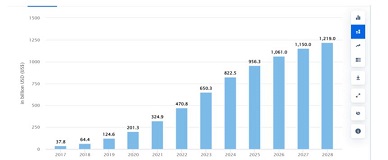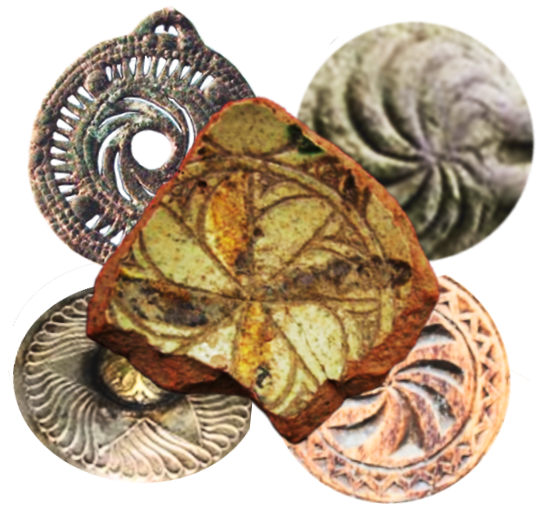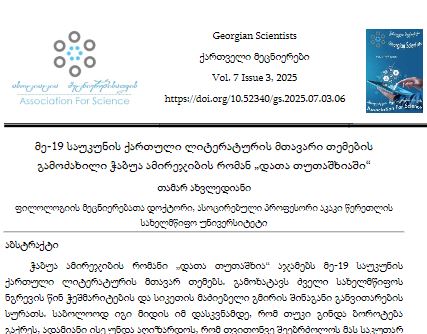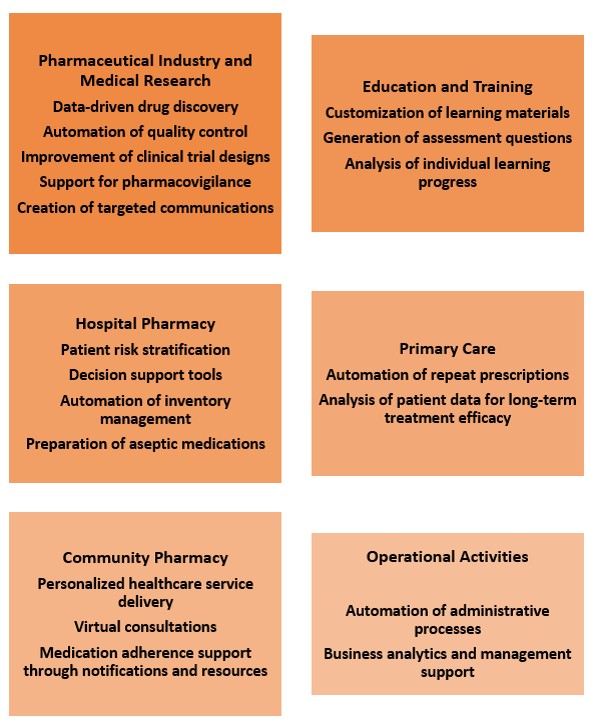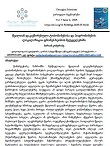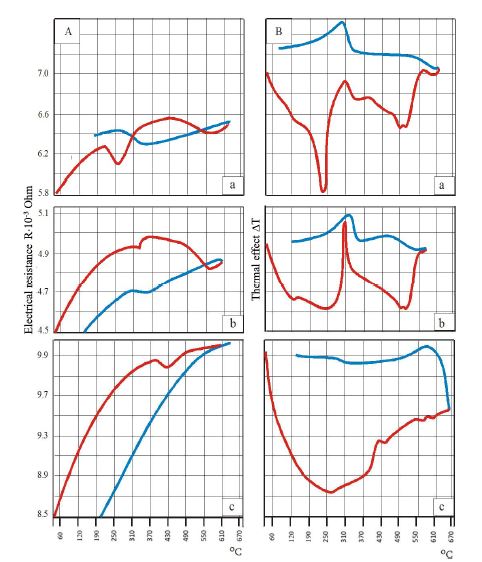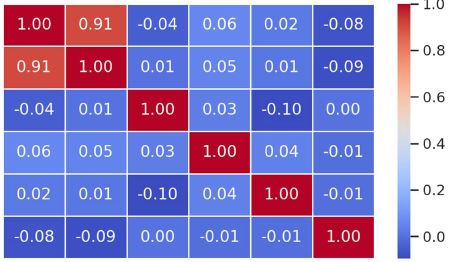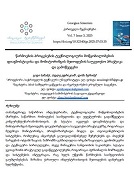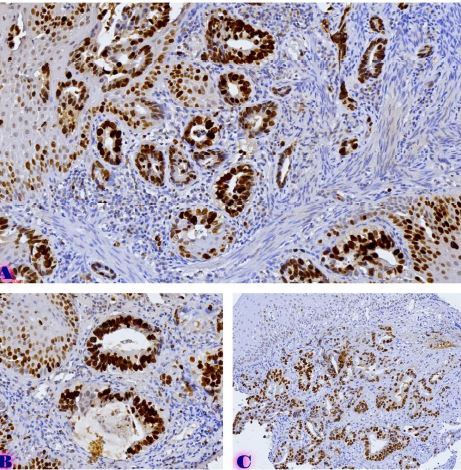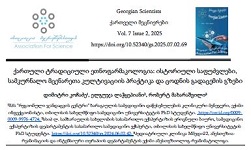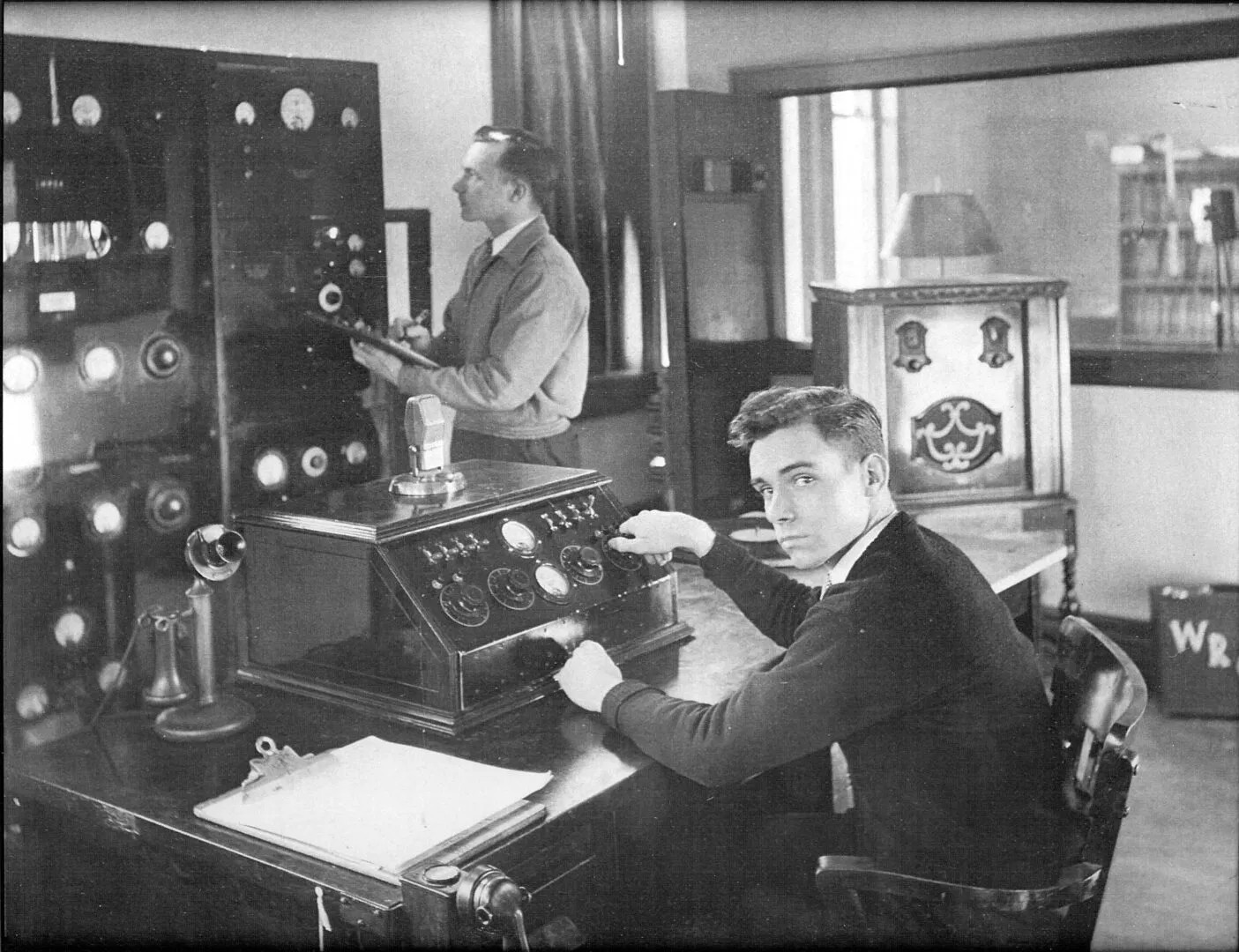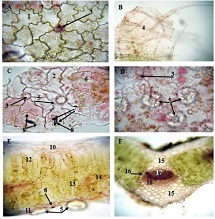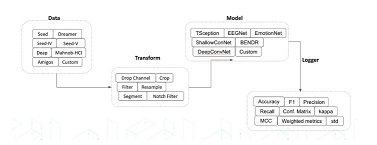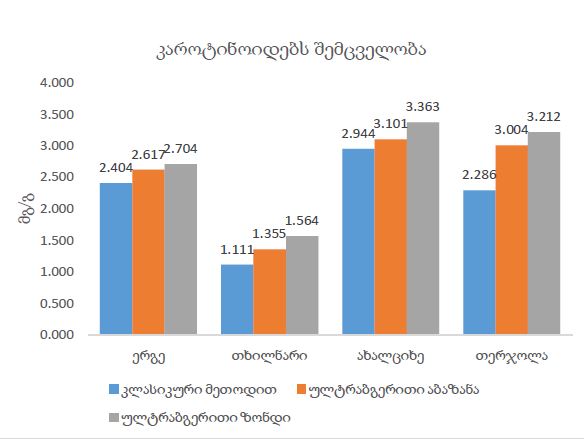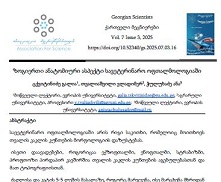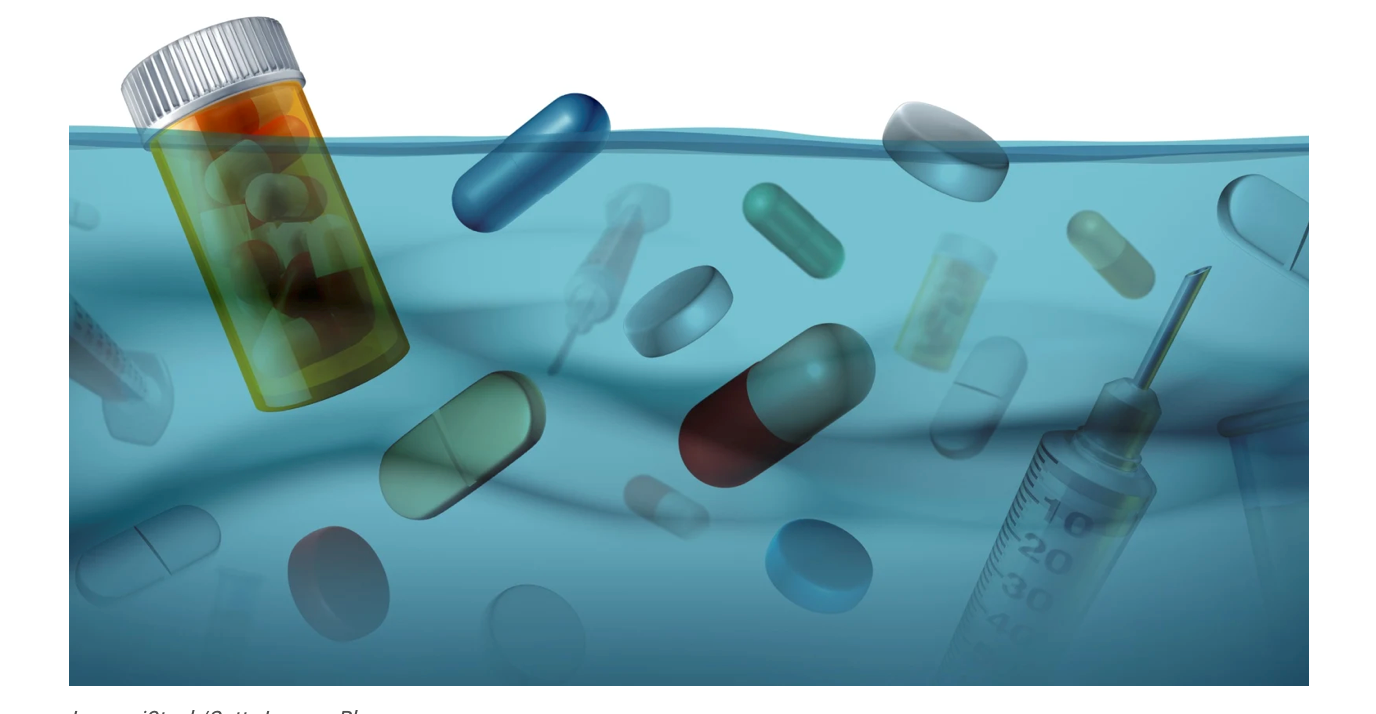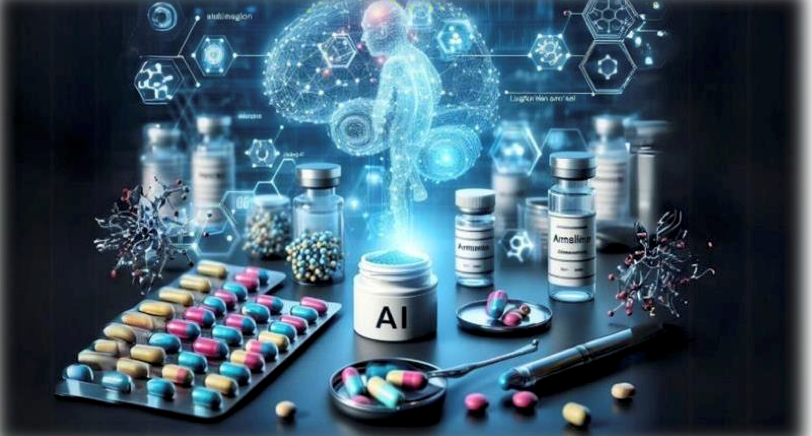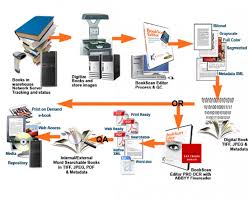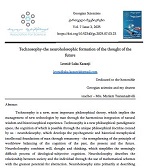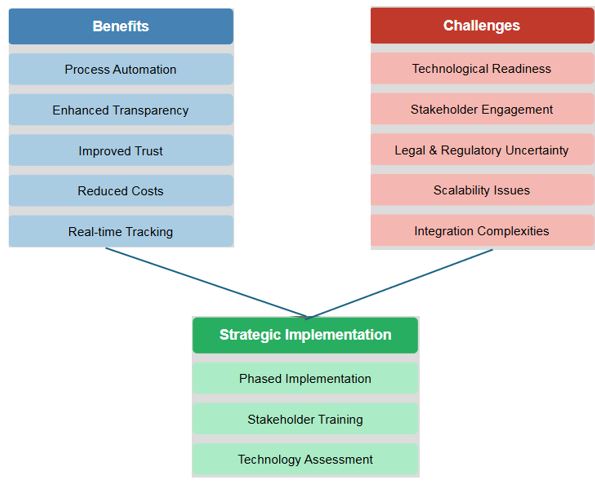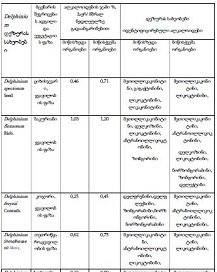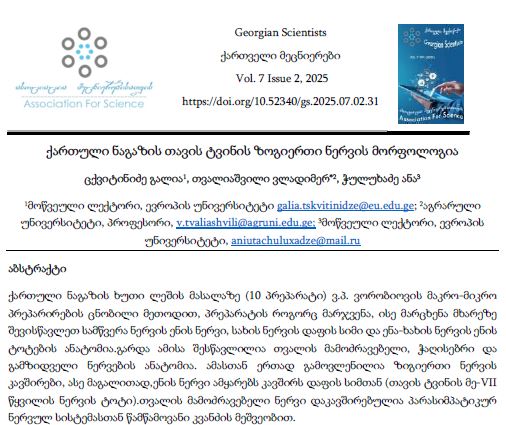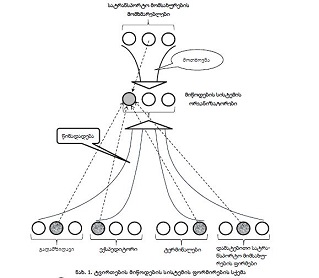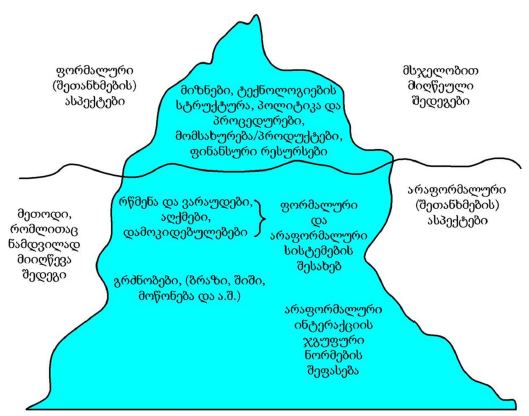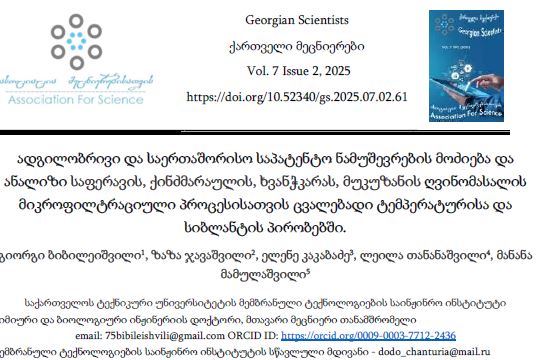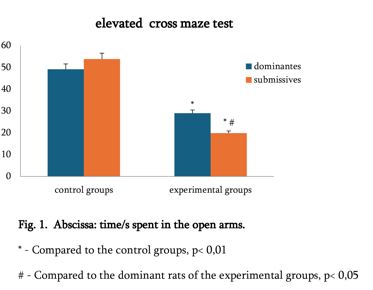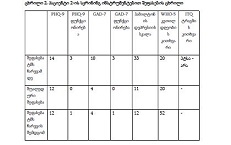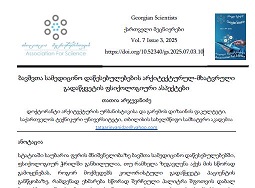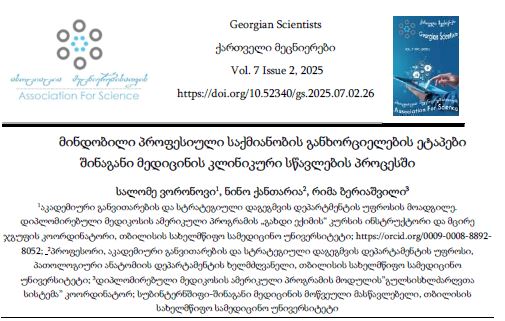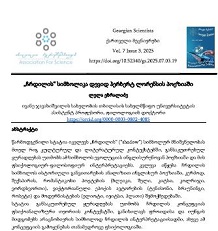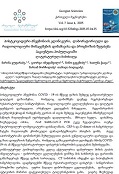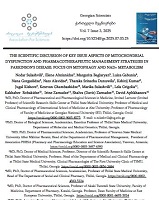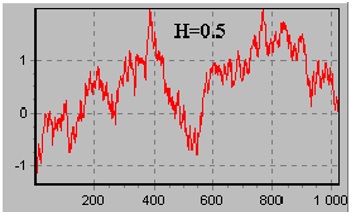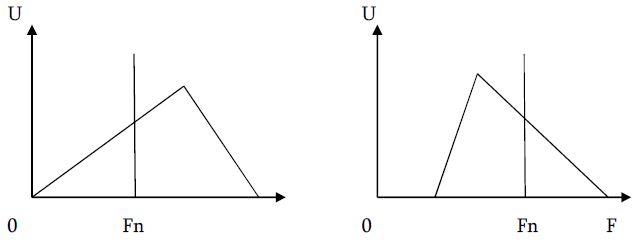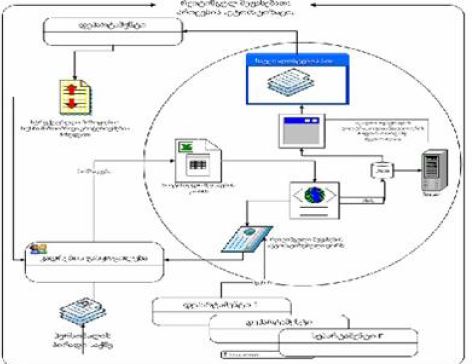Prostaglandin E2 as neuroinflammatory target in childhood resistant epilepsies
Загрузки
Aim: Childhood epilepsies are a diverse group of neurological disorders with a multifaceted clinical course caused by a range of aetiological factors. Despite new Anti Seizure Drugs (ASDs), drug resistance remains a significant hurdle in treatment. Growing evidence links epilepsy to inflammatory processes, especially in drug-resistant cases. A number of neuroinflammatory pathways involving cytokines have been identified in the pathogenesis of drug resistant epilepsy, including the axis of Cox2–PGE2-Prostaglandin E2 receptor 1 that has been shown to affect blood-brain barrier function, and drug pharmacokinetics through upregulation of multidrug effluxers. We measured the plasma PGE2 levels aiming to determine PGE2 importance in epilepsy-associated inflammation and antiepileptic drug (AED) response for the patients with different types of epilepsy .
Methods: a prospective review of clinical and paraclinical data of study group (Group 1), including patients with epilepsy who had ongoing long term follow-up in two subgroups: Group 1A-Patients diagnosed with epilepsy -seizure-free on AED therapy, Group 1B- patients with refractory epilepsy and healthy control group (Group2). Serum samples tested for PGE2 levels(interquartile ranges/pg/ml) by the enzyme-linked immunosorbent assay (ELISA).
Results: Measured serum PGE2 the median interquartile ranges (IQR) were higher and in broader ranges for epilepsy patients all together 512 pg/ml (324.5-970.0 )compared to healthy controls 406 pg/ml (278.7-541.4) , but not significantly different across the epilepsy study groups (p>0.05). Only Valproate responders showed reduced PGE2 mean IQR 490 pg/ml.
Conclusions: Our findings align with preclinical models, suggesting a potential target on molecular basis for overcoming drug resistance, which is a major challenge and key toward precision medicine in epilepsy management.
Скачивания
Aaberg, K.M.; Gunnes, N.; Bakken, I.J.; Søraas, C.L.; Berntsen, A.; Magnus, P.; Lossius, M.I.; Stoltenberg, C.; Chin, R.; Surén, P. Incidence and Prevalence of Childhood Epilepsy: A Nationwide Cohort Study. Pediatrics 2017.
Zack, M.M.; Kobau, R. National and State Estimates of the Numbers of Adults and Children with Active Epilepsy United States, 2015. MMWR. Morb. Mortal. Wkly. Rep. 2017, 66, 821–825.
Symonds, J.D.; Elliott, K.S.; Shetty, J.; Armstrong, M.; Brunklaus, A.; Cutcutache, I.A.; Diver, L.; Dorris, L.; Gardiner, S.; Jollands, A.; et al. Early childhood epilepsies: Epidemiology, classification, aetiology, and socio-economic determinants. Brain 2021, 144, 2879–2891.
Kwan, P.; Arzimanoglou, A.; Berg, A.T.; Brodie, M.J.; Allen Hauser, W.; Mathern, G.; Moshé, S.L.; Perucca, E.; Wiebe, S.; French, J. Definition of drug resistant epilepsy: Consensus proposal by the ad hoc Task Force of the ILAE Commission on Therapeutic Strategies. Epilepsia 2010, 51, 1069–1077.
Rana A, Musto AE. The role of inflammation in the development of epilepsy. J Neuroinflammation. 2018;15(1):144. Published 2018 doi:10.1186/s12974-018-1192-7
Chen Y, Nagib MM, Yasmen N, et al. Neuroinflammatory mediators in acquired epilepsy: an update. Inflamm Res. 2023;72(4):683-701. doi:10.1007/s00011-023-01700-8
Jiang J, Santhakumar V, Zhu X. Editorial: Neuroinflammation in acquired epilepsy. Frontiers in Cell and Developmental Biology 2022; 10.3389/fcell.2022.1074537.
Mukhtar I. Inflammatory and immune mechanisms underlying epileptogenesis and epilepsy: From pathogenesis to treatment target. Seizure. 2020;82:65-79.
Quan N. Immune-to-brain signaling: how important are the blood-brain barrier-independent pathways?. Mol Neurobiol. 2008;37(2-3):142-152.
Jiang C, Caskurlu A, Ganesh T, Dingledine R. Inhibition of the prostaglandin EP2 receptor prevents long-term cognitive impairment in a model of systemic inflammation. Brain Behav Immun Health. 2020;8:100132. Published 2020 Aug 25
Danielski L.G., Giustina A.D., Badawy M., Barichello T., Quevedo J., Dal-Pizzol F., Petronilho F. Brain barrier breakdown as a cause and consequence of neuroinflammation in sepsis. Mol. Neurobiol. 2018;55(2):1045–1053. doi: 10.1007/s12035-016-0356-7
York E.M., Bernier L.P., MacVicar B.A. Microglial modulation of neuronal activity in the healthy brain. Dev. Neurobiol. 2018;78(6):593–603. doi: 10.1002/dneu.22571.
Ganesh T. Targeting EP2 Receptor for Drug Discovery: Strengths, Weaknesses, Opportunities, and Threats (SWOT) Analysis. J Med Chem. 2023;66(14):9313-9324. doi:10.1021/acs.jmedchem.3c00655
Sluter M. N.; Hou R.; Li L.; Yasmen N.; Yu Y.; Liu J.; Jiang J. EP2 Antagonists (2011–2021): A Decade’s Journey from Discovery to Therapeutics. J. Med. Chem. 2021, 64 (16), 11816–11836. 10.1021/acs.jmedchem.1c00816
Yu Y; Nguyen DT; Jiang JG protein-coupled receptors in acquired epilepsy: Druggability and translatability. Prog. Neurobiol 2019, 183, 101682
Aronica E, Bauer S, Bozzi Y, Caleo M, Dingledine R, Gorter JA, Henshall DC, Kaufer D, Koh S, Loscher W, Louboutin JP, Mishto M, Norwood BA, Palma E, Poulter MO, Terrone G, Vezzani A, Kaminski RM, 2017. Neuroinflammatory targets and treatments for epilepsy validated in experimental models. Epilepsia 58 Suppl 3, 27–38.
Serrano GE, Lelutiu N, Rojas A, et al. Ablation of cyclooxygenase-2 in forebrain neurons is neuroprotective and dampens brain inflammation after status epilepticus. J Neurosci. 2011;31:14850–14860.
Fattorusso A, Matricardi S, Mencaroni E, et al. The Pharmacoresistant Epilepsy: An Overview on Existant and New Emerging Therapies. Front Neurol. 2021;12:674483. Published 2021 Jun 22. doi:10.3389/fneur.2021.674483
Physical Activity Guidelines Advisory Committee . 2018 Physical Activity Guidelines Advisory Committee Scientific Report. US Department of Health and Human Services; Washington, DC, USA: 2018.
Gakharia, T., Bakhtadze, S., Lim, M., Khachapuridze, N., & Kapanadze, N. (2022). Alterations of Plasma Pro-Inflammatory Cytokine Levels in Children with Refractory Epilepsies. Children (Basel, Switzerland), 9(10), 1506. https://doi.org/10.3390/children9101506
Vezzani A, French J, Bartfai T, Baram TZ. The role of inflammation in epilepsy. Nat Rev Neurol. 2011;7(1):31-40. doi:10.1038/nrneurol.2010.178
Xin Y, Tian M, Deng S, et al. The Key Drivers of Brain Injury by Systemic Inflammatory Responses after Sepsis: Microglia and Neuroinflammation. Mol Neurobiol. 2023;60(3):1369-1390. doi:10.1007/s12035-022-03148-z
Képes Z, Dénes N, Kertész I, Hajdu I, Trencsényi G. Overview of Prostaglandin E2 (PGE2)-Targeting Radiolabelled Imaging Probes from Preclinical Perspective: Lessons Learned and Road Ahead. Int J Mol Sci. 2023;24(8):6942. Published 2023 Apr 8. doi:10.3390/ijms24086942
Jiang J, Quan Y, Ganesh T, Pouliot WA, Dudek FE, Dingledine R, 2013. Inhibition of the prostaglandin receptor EP2 following status epilepticus reduces delayed mortality and brain inflammation. Proc. Natl. Acad. Sci. U. S. A 110, 3591–3596. [PMC free article] [PubMed] [Google Scholar]
Yu Y, Jiang J. COX-2/PGE2 axis regulates hippocampal BDNF/TrkB signaling via EP2 receptor after prolonged seizures. Epilepsia Open. 2020;5(3):418-431. Published 2020 Jun 9. doi:10.1002/epi4.12409
Ximenes JC, de Oliveira Gonçalves D, Siqueira RM, et al. Valproic acid: an anticonvulsant drug with potent antinociceptive and anti-inflammatory properties. Naunyn Schmiedebergs Arch Pharmacol. 2013;386(7):575-587. doi:10.1007/s00210-013-0853-4
45. Ichiyama T, Okada K, Lipton JM, Matsubara T, Hayashi T, Furukawa S. Sodium valproate inhibits production of TNF-alpha and IL-6 and activation of NF-kappaB. Brain Res. 2000;857(1-2):246-251. doi:10.1016/s0006-8993(99)02439-7
Rawat C, Kutum R, Kukal S, et al. Downregulation of peripheral PTGS2/COX-2 in response to valproate treatment in patients with epilepsy. Sci Rep. 2020;10(1):2546. Published 2020 Feb 13. doi:10.1038/s41598-020-59259-x
Löscher W, Potschka H, Sisodiya SM, Vezzani A. Drug Resistance in Epilepsy: Clinical Impact, Potential Mechanisms, and New Innovative Treatment Options. Pharmacol Rev. 2020;72(3):606-638. doi:10.1124/pr.120.019539
Miller DS, Bauer B, Hartz AM. Modulation of P-glycoprotein at the blood-brain barrier: opportunities to improve central nervous system pharmacotherapy. Pharmacol Rev. 2008;60(2):196-209. doi:10.1124/pr.107.07109
Rawat C, Kukal S, Dahiya UR, Kukreti R. Cyclooxygenase-2 (COX-2) inhibitors: future therapeutic strategies for epilepsy management. J Neuroinflammation. 2019;16(1):197. Published 2019 Oct 30. doi:10.1186/s12974-019-1592-3
Rawat C, Shivangi, Kushwaha S, Sharma S, Srivastava AK, Kukreti R. Altered plasma prostaglandin E2 levels in epilepsy and in response to antiepileptic drug monotherapy. Prostaglandins Leukot Essent Fatty Acids. 2020;153:102056. doi:10.1016/j.plefa.2020.102056
Copyright (c) 2024 Georgian Scientists

Это произведение доступно по лицензии Creative Commons «Attribution-NonCommercial-NoDerivatives» («Атрибуция — Некоммерческое использование — Без производных произведений») 4.0 Всемирная.






